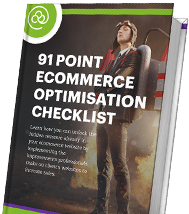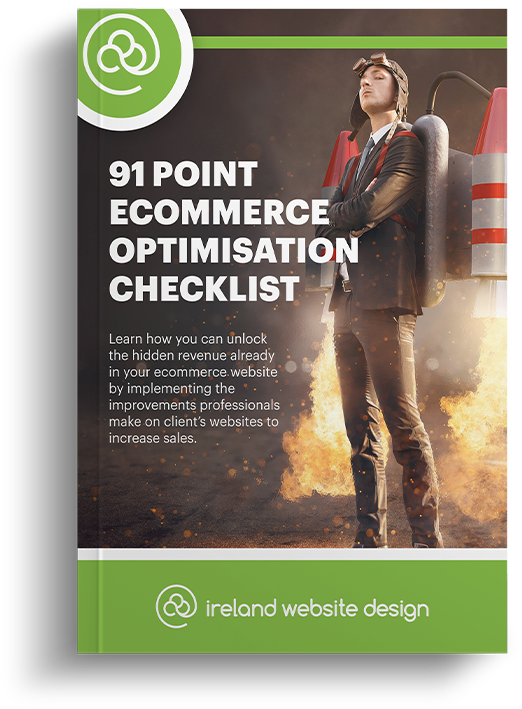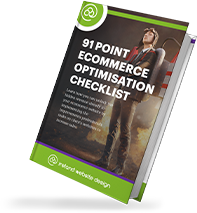Your digital strategy is vital to your eCommerce operations. But as an omnichannel retailer, can you say that your in-store staff know how your online sales work?
In a society where technology is now so ingrained in everything we do, omnichannel retail looks to be the future for Irish retailers. That said, with over 70% of all online sales in Ireland going overseas, there’s still work to be done balancing the value of face-to-face customer service with the ease of online shopping.
As a retailer, you may have noticed a shift towards a more “purpose-driven” way of shopping since the pandemic. Consumers now browse less in-store and visit retail spaces with a clear vision of what they want to purchase. With consumer research carried out almost exclusively online before reaching this point, the customer journey needs to integrate both online and in-store experiences, seamlessly.
So, why is your digital strategy so important to the in-store experience? We’re here with some insights!
1. Omnichannel retail requires consistency
Even though in-store retail greatly differs from eCommerce, it’s important to remember that your online and offline activities need to be in sync. Without cohesion across your touchpoints, a strong brand image will be more difficult to establish.
Omnichannel retail has always required a united front to work effectively, but what’s often overlooked is just how important in-store team members are to your overall messaging.
Especially when social media and online reviews hold so much weight, it’s important to remember that what happens in-store will also be discussed online. Retail staff essentially bridge the gap between physical and online shopping experiences, so their potential to impact your brand image is significant.
This is where reminding in-store teams of your overall brand voice and digital objectives is essential. It helps staff maintain consistency with your overall messaging and provides guidance for store managers on managing policy more effectively.
Some key points from your digital strategy to share with in-store sales teams include:
- The audience your digital touchpoints are targeting
- The voice and tone your eCommerce website is promoting
- The value that your digital strategy aims to highlight
- Promotional activities (a little more on this coming up!)
- Areas where online sales outperform compared to in-store sales
- Areas where online sales underperform compared to in-store sales
2. If customers see a promotion online, they’ll ask about it in-store
Have you ever seen a promotion advertised online and then visited the store to find that the sales assistant knows nothing about it? Even though it’s not usually the sales assistant who is at fault, they’re usually the ones who get to enjoy the wrath of a disgruntled customer.
Not having staff well-versed in online promotions can not only be detrimental to your brand’s image, it can also cause significant confusion in-store. While it’s normal for certain promotions to only be available online, this needs to be communicated effectively at all levels.
To counteract a customer’s disappointment about a certain eCommerce promotion not being available, your retail team should be trained in managing this disappointment. For example, they can seize this opportunity to offer value through in-store discounts and special offers — without taking away from the benefits of the online promotion.
In terms of online promotions, your retail team should:
- Know which products the promotion is pushing
- Be able to connect customers with these products in-store (or through an online catalogue)
- Be able to answer questions about the terms of the promotion
- Be able to guide the customer through the process of making an online purchase using your store’s mobile app
- Be able to increase the likelihood of an online purchase being made (if the customer leaves the shop without making a purchase)
3. Digital tools can now guide in-store sales
Following on from the previous point, it’s now common for retail staff to carry tablets. This can be to check stock, access a full digital catalogue, or even guide customers on how to use your store’s mobile app or website (usually for out-of-stock items). However, this isn’t the only way digital tools guide the in-store experience.
Have you ever used a virtual tool to see how a specific paint colour would look on your wall? Or maybe you’ve used augmented reality to get a feel for a new car before you take it for a test drive? How we engage with products online can now play a role in supporting in-store sales, instead of detracting from them.
With 81% of consumers going online before visiting a store, we know that even those who value in-person customer service are venturing online first. This is where that ‘sweet spot’ of omnichannel marketing comes in; it’s important to broaden your value for all customers, not just separate groups.
4. Data is everything — even in-store!
Data-driven retail strategies have become an integral part of making informed business decisions. The insights that data provides about customers, inventories, competitors, pricing, and so more are invaluable.
When data for both online and offline sales are correlated, retailers can easily identify the strengths and weaknesses of each of their touchpoints.
Omnichannel retail is all about balance, and insights at every level should be able to help inform in-store teams about what their customers want from their shopping experience that they can’t get online.
Likewise, eCommerce is heavily influenced by data surrounding how consumers shop in-store — just another reason why your digital strategy also needs to involve your brick-and-mortar teams.
5. We started with click & collect, now we’re here
During the first lockdown period of the Covid-19 pandemic, click-and-collect soared in popularity. With many in-store retailers not prepared for how to effectively manage orders, it was a steep learning curve as to why digital strategies and in-store operations need to work together.
With many physical retailers also now shipping from in-store and sales assistants getting involved with digital tools — the way retailers are merging online and offline sales is getting more creative.
In our opinion, contactless payment and the launch of cashier-less stores are only the beginning of where retail can go… if only we knew exactly where that was!
What we do know is that omnichannel retail works best if all elements of your business operations are aligned. This means keeping your in-store team up-to-date on as many of your main digital activities as possible.
Bonus tip: Educate your in-store teams, but don’t overwhelm them
While it’s important for your in-store teams to know about your digital strategy, it’s also not essential for them to know every last detail. This is because even though it’s good for your retail team to have a clear idea of what’s happening online, the benefits of the ‘in-store’ experience should remain their focus.
This is where framing your digital strategy in a way that supports and informs your brick-and-mortar employees can be helpful. Break down your strategy into key points and allow store managers the freedom to capitalise on opportunities as they appear.
How Ireland Website Design can help:
As specialists in omnichannel marketing, we’ve helped many retail businesses effectively balance their online and in-store sales.
As well as offering web design and development services, we also offer tools to enhance the customer experience such as virtual tours and 360-degree photography. With everything you need to offer value to both online and offline customers, we can take your omnichannel marketing to the next level.
To find out more, just reach out and we’ll be happy to discuss exactly what we can do for you!




